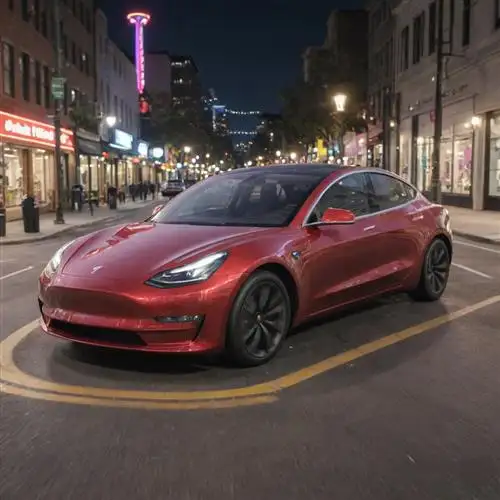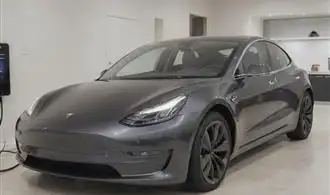
Charging Speeds and Charging Times
The Tesla Model 3 offers a variety of charging solutions, each with its own unique capabilities and charging times. Understanding the different charging speeds and their implications is crucial for Tesla owners to optimize their charging experience and ensure their vehicle is ready when they need it.
One of the key factors that influences charging speed is the type of charging equipment used. The Model 3 is compatible with several charging options, including Level 1, Level 2, and Tesla's proprietary Supercharger network. Each of these charging levels offers varying levels of power output, which directly affects the time required to fully charge the vehicle's battery.
Level 1 charging, which utilizes a standard household 120V outlet, provides the slowest charging speeds. This method typically adds about 3 to 5 miles of range per hour of charging. While convenient for occasional top-ups, Level 1 charging is not recommended for primary charging, as it can take up to 24 hours or more to fully recharge the Model 3's battery.
Level 2 charging, on the other hand, provides significantly faster charging speeds. By utilizing a 240V outlet, typically found in homes or public charging stations, the Model 3 can charge at a rate of 20 to 25 miles of range per hour. This makes Level 2 charging the preferred choice for daily charging, as it can fully recharge the battery in as little as 8 to 12 hours, depending on the battery size and state of charge.
The Tesla Supercharger network, the company's proprietary high-speed charging solution, offers the fastest charging speeds available. Superchargers can add up to 175 miles of range in just 15 minutes, with a full recharge taking as little as 30 to 45 minutes. This makes Superchargers the ideal choice for long-distance travel or when a quick top-up is needed on the go.
It's important to note that the actual charging time for the Tesla Model 3 can vary based on several factors, including the battery size, the state of charge, the ambient temperature, and the charging equipment used. Owners should familiarize themselves with the charging capabilities of their specific Model 3 configuration to ensure they can plan their charging routines effectively.
Charging Etiquette and Considerations
Charging your Tesla Model 3 goes beyond simply plugging in and letting the battery fill up. There are certain considerations and etiquette to keep in mind to ensure a smooth and efficient charging experience. First and foremost, be mindful of your charging station's location and any signage or rules that may be in place. Some stations are reserved for specific vehicles or users, so be sure you're using the appropriate spot. Additionally, avoid monopolizing a charger if others are waiting, and move your car once it's sufficiently charged to allow others access.
When it comes to the charging process itself, pay attention to the charging rate and adjust your expectations accordingly. The Model 3's charging speed can vary based on factors like the type of charger, the state of the battery, and the ambient temperature. Faster charging options like Superchargers or high-power Level 2 chargers will replenish your battery more quickly, but they may not always be available. Be patient and plan accordingly to ensure you have enough charge for your journey.
Another important aspect of charging etiquette is being considerate of your fellow Tesla owners. If you're using a shared charging station, be mindful of how long you're occupying the spot and avoid leaving your car plugged in after it's fully charged. This can help prevent frustration and ensure that everyone has access to the limited charging resources. Additionally, consider the needs of other electric vehicle owners and be willing to share charging stations, if possible.
It's also worth noting that certain driving habits and charging practices can impact the long-term health of your Tesla's battery. Avoid leaving your car plugged in and charging at maximum capacity all the time, as this can put unnecessary strain on the battery. Instead, try to charge to a more moderate level, such as 80%, unless you're preparing for a long-distance trip. Additionally, be mindful of extreme temperatures, as both hot and cold conditions can affect the battery's performance and lifespan.
Maximizing Efficiency and Range
Maximizing the efficiency and range of your Tesla Model 3 is crucial for getting the most out of your electric vehicle. One of the key factors in achieving this is proper charging practices. It's important to understand the nuances of Tesla's charging technology and how to optimize it for your driving needs.
Firstly, it's essential to be mindful of your charging habits. Avoid constantly charging your Tesla to 100% as this can degrade the battery over time. Instead, aim to keep the battery between 20-80% for daily driving. This helps maintain the battery's longevity and ensures you get the maximum range from your vehicle.
Another crucial aspect is understanding the different charging modes available in the Tesla Model 3. The "Standard" charging mode is optimized for everyday use, providing a balance between efficiency and charging speed. However, for longer trips or when you need to charge more quickly, the "Max Range" charging mode can be particularly useful. This mode prioritizes maximum range over charging speed, ensuring you get the most out of your battery.
Additionally, Tesla's regenerative braking system is a powerful tool for boosting your range. This system converts the kinetic energy generated during braking into electrical energy, which is then stored in the battery. By being mindful of your driving style and taking advantage of regenerative braking, you can significantly increase the overall efficiency of your Tesla Model 3.
It's also worth noting that ambient temperature can have a significant impact on your Tesla's range. In colder weather, the battery may need to work harder to maintain the optimal operating temperature, which can result in a reduction in range. To mitigate this, consider using the "Scheduled Departure" feature, which allows you to precondition the battery before your next trip, ensuring it's at the ideal temperature for maximum efficiency.
Charging on the Road and Long Trips
Embarking on a long road trip with your Tesla Model 3 requires a strategic approach to charging. Optimizing charging stops can make the journey seamless and efficient. One crucial factor is the charging network. Tesla's Supercharger network offers a reliable and fast-charging solution, with stations strategically placed along major highways. These Superchargers can add up to 175 miles of range in just 15 minutes, making them an ideal choice for quick top-ups during your trip.
Planning your charging stops is essential. Utilize the in-car navigation system or the Tesla mobile app to identify Supercharger locations along your route. This will allow you to accurately estimate your charging needs and ensure you reach your destination with ample battery life. Additionally, be mindful of your driving style and conditions, as factors such as terrain, weather, and road speeds can impact your energy consumption and charging requirements.
While Superchargers offer lightning-fast charging, there may be instances where you need to rely on alternative charging options. Public Level 2 charging stations, often found in shopping malls, hotels, or municipal parking lots, can provide a supplementary charging solution. Though the charging speed is slower, these stations can be valuable when Superchargers are not readily available.
Another aspect to consider is the charging etiquette. Be mindful of other Tesla owners who may be waiting to use the Supercharger. Avoid monopolizing a stall for extended periods, and move your vehicle once it has reached a sufficient charge level. This considerate approach will ensure a positive experience for all Tesla owners on the road.
Maintaining Battery Health and Longevity
Proper battery care is crucial for Tesla Model 3 owners who want to maximize the lifespan and performance of their vehicle's battery pack. While Tesla's battery technology is renowned for its reliability and longevity, there are certain practices you can adopt to ensure your battery remains in optimal condition for years to come.
One of the most important factors in maintaining battery health is managing charging habits. Avoid constantly charging your Tesla Model 3 to 100% capacity, as this can put unnecessary strain on the battery over time. Instead, aim to charge your vehicle to around 80-90% for daily use, and only charge to 100% when you know you'll be driving long distances without access to charging stations. Additionally, try to avoid letting your battery drain below 20% whenever possible, as this can also contribute to accelerated battery degradation.
Temperature control is another key consideration when it comes to preserving battery longevity. Extreme temperatures, both hot and cold, can have a detrimental effect on battery performance and lifespan. During the summer months, park your Tesla Model 3 in the shade or in a garage to minimize exposure to direct sunlight, which can cause the battery to overheat. Conversely, in cold weather, use the vehicle's preconditioning feature to warm the battery before departure, as this can help maintain optimal operating temperatures and prevent excessive discharge.
Regular maintenance and monitoring of your Tesla Model 3's battery health is also essential. Tesla's Battery Management System (BMS) provides detailed information on the state of your battery, including its capacity, charge level, and overall health. By keeping a close eye on these metrics, you can identify any potential issues early on and take proactive steps to address them, such as adjusting your charging habits or seeking professional assistance if necessary.
















